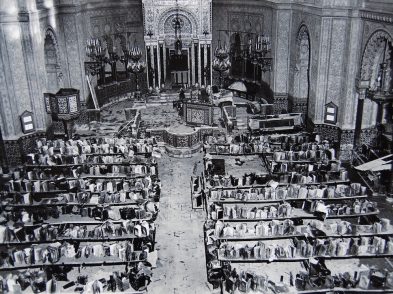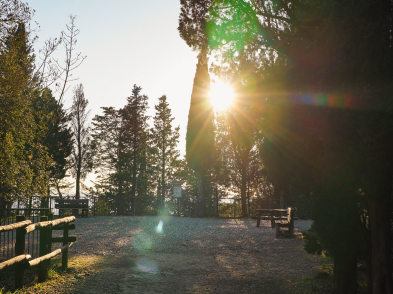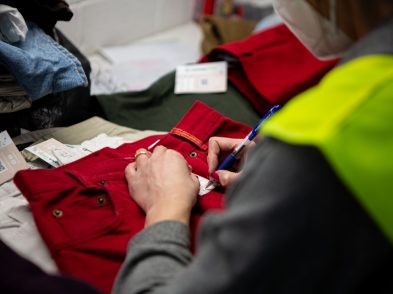Last week, Giuliano da Empoli,
superintendent of culture and ‘contemporary-ness’ for the city of Florence, published
a document called ‘Florence is the Next Florence: a strategy for contemporary
art and culture in Florence’ on the BarCamp website. In the spirit of crowdsourcing,
this is a draft upon which comments are welcome; in a month he’ll publish the
final version.
If you love Florence
and want to know what the city plans to do to improve its cultural offerings
over the next decade, you need to read this document. However, it’s 16 pages of
tight scholarly writing in Italian, so we’re providing a summary (and some
commentary).
What’s presented in this document is a series of good
ideas, some already more solidly planned than others. It offers ideas for a
‘re-launch’ of Florence,
which really just needs to be woken up from a brief moment of cultural statis
and degeneration when compared to its much longer history of greatness. But the
most important concept expressed here is that we are not looking for another
Renaissance, which by definition is a looking back; Florence wants to look
forward, not back; build upon its great past, take advantage of its current
resources, and see a great future that is necessarily different from what has
already taken place.
0.1 THE FLORENTINE PARADOX
Da Empoli starts by presenting some of the problems in
Florence,
framed in contrast to recent developments and urban renewal in Rome, Toronto, Minneapolis,
and elsewhere. Tourism (‘cultural capitalism’) started in Florence
already in the Renaissance; now the city is overcrowded and riddled with problems.
Companies and young people plot their escape from what is perceived of as a
dead city, while tourists tend to come here once, go to the Uffizi, and then do
not come back.
The rest of the section introduces the broad lines of
a plan to increase the contemporary offering in the city, then a series of
smaller ‘things to do.’
0.2 THE POST-BILBAO STRATEGY
The next section of the document contains an
interesting observation on the strategies used since the 1990s for city
(re)growth. Starting with the Guggenheim in Bilbao,
the idea was to get a superstar architect from another city and build an
expensive ‘container’ for art: it didn’t really matter what went in.
Da Empoli says that Florence
needs to put its emphasis on the ‘thing contained’ rather than on the
container. (I could not agree more. We have the container-plenty of buildings
to renovate-but need the filling). In order to have a differentiated cultural
offering we’ll first need to create it.
Florence
offers two main resources for that. The first is indisciplina, which is
a great word that means unruliness but also implies interdisciplinarity. Citing
examples like MIT’s Media Lab, Da Empoli uses this is as a call to break down
boundaries. The second resource is an openness to the outside that includes
making use of what stranieri can contribute. (something that I cannot
help but appreciate).
0.3 STARTING WITH WHAT WE’VE GOT
I’m going to depart from the document’s precise order
to focus on the various suggestions regarding access to and communication of
the arts (that I think are right on target). The city plans to:
Offer a museum card that gives joint access to city
and state museums in Florence.
Create nighttime openings and events in museums and a
downtown babysitting service so that young parents could attend evening
cultural events.
Have a central event coordinator that would help
spread out events and their related press releases and openings across the calendar.
Develop a centralized online event calendar. (You’d
think we’d already have one, yet we rely on external, private websites like The
Florentine to put it all together for us.)
Plan things further in advance.
Choose appropriate locations for contemporary
offerings and select qualified managers.
Open an art cinema (already in the works for early
2010).
0.4 (THE REST OF THE DOCUMENT)
The document lists some of the activities that are
already in the works for Florence.
These include:
The Florence Ambassadors program will invite the most
interesting person in town each day to give a free public talk at Palazzo
Vecchio (broadcast online too).
Cultural diplomacy: the creation of a prize for a
person who, through art and culture, creates a cultural bridge between Florence
and other countries. This prize has an innovative payout structure: 75 percent
to the assumedly senior winner, 25 percent to the young person of the winner’s
choice.
Night life: Not only having something to do, but
simply having access to stores would be essential to the development of the
‘city that creates.’ Artists, who are famously nocturnal, need to be able to
buy food at 2am
or on a Sunday. Let’s get rid of the dead moments in the city and step into the
new millennium.
Encourage interdisciplinary studies between art and
science. Called new humanism, this idea should come naturally to the
city in which Renaissance men like Alberti and Leonardo walked; it will be
encouraged through existing institutions like the Museum
of Science
and by creating events and seminars.
In conclusion, Da Empoli summarizes, this document
prioritizes contents not containers, and puts ideas before resources. All these
ideas are good, but will there be the financial resources to make them happen?
I do not doubt this city’s brainpower and will, and I
feel reassured by our new city
government’s intellectual approach, but as I always say, there are always more
good ideas than money. Let’s hope the culture ministry has a big budget or
generous corporate sponsors. Meanwhile let’s support these good ideas and look
forward to the New Florence.
Da Empoli’s document is available online: http://barcamp.org/f/FLORENCE%20IS%20THE%20NEXT%20FLORENCE.pdf







